 There are a number of times when it’s generally good to fast your pet, particularly when there is a fever. The normal body temperature of a dog or cat is about 101.5°F. Anything below 100°F and above 103°F is cause for concern and you ought to contact your holistic veterinarian.
There are a number of times when it’s generally good to fast your pet, particularly when there is a fever. The normal body temperature of a dog or cat is about 101.5°F. Anything below 100°F and above 103°F is cause for concern and you ought to contact your holistic veterinarian.
Most holistic veterinarians advocate fasting now and then, although the length of time for the fast is sometimes an area of debate. In the case of fever, the fast ought to last until the temperature returns to normal, which may take one or two days, but can sometimes take longer. A fast of up to four, five, even ten days is sometimes recommended, but only if your dog or cat is in reasonably good health.
 Fasting is a natural occurrence for dogs and cats in the wild, and you will notice your domesticated friend will often shy away from food when feeling ill. There are scientific reasons for this.
Fasting is a natural occurrence for dogs and cats in the wild, and you will notice your domesticated friend will often shy away from food when feeling ill. There are scientific reasons for this.
Your pet’s body is constantly working at eliminating waste products, and sometimes the workload can become excessive. If your dog ate goose poop at the park, for example, his system is now processing the foods he ate earlier, the toxins in the environment, AND the load of bacteria-laden goose droppings. This is a lot for the liver and kidney to handle. If the dog fasts for a while, it gives his internal mechanisms time to process out the substances that are harmful to his body.
If the dog fasts for a while, it gives his internal mechanisms time to process out the substances that are harmful to his body.
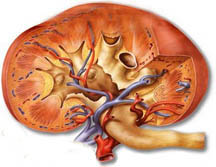
In addition, fasting can give the body a chance to decompose and expel the buildup of older substances that have settled in and accumulated in the liver and lipid tissues. Do not, however, attempt a long fast without guidance from your holistic veterinarian. Fasting can be bad if your pet has certain conditions such as cancer, uremia, prolonged malnutrition, distemper, tuberculosis, or hookworms. You need the knowledge of an expert to ensure that your pet’s circumstance warrants a fast.
When you seek out a veterinary professional, find one who has experience in fields such as naturopathy, nutrition, immunology, and any other specialty area that falls into the holistic circle of treating the condition as a whole, instead of just focusing on a symptom. There are many good orthodox veterinarians out there, too, but a great number of them have gone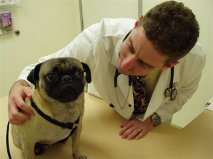 through “cookie cutter” vet school and they’ve never thought about or delved into any of the sciences that focus on looking at the condition as a part of an entire system, as a whole. The old adage “You are what you eat” is so simple and so logical and so scientific. Yet it gets ignored very often in conventional veterinary care.
through “cookie cutter” vet school and they’ve never thought about or delved into any of the sciences that focus on looking at the condition as a part of an entire system, as a whole. The old adage “You are what you eat” is so simple and so logical and so scientific. Yet it gets ignored very often in conventional veterinary care.
It only makes sense to consider nutrition and naturopathy in every case of illness for ourselves and for our pets. But many veterinarians are stuck in the mindset that they learned in vet school – a vet school sponsored by a large pet food conglomerate – a mindset that claims the sponsoring company’s bagged and canned products have been manufactured to be thefood that’s best for your pet. And how many people believe them? Millions. And how  many people investigate the quality of the ingredients? Very, very few. One of the very best things you can do for your faithful companion is to find a veterinarian who has taken the initiative to learn about these holistic fields in addition to the standard veterinary medical classes. It’s not like it’s going to cost you more to see a veterinarian with these additional credentials. In fact, it will cost you less because you won’t have steroids, antibiotics, and vaccinations pushed on you every time you visit, and because your pet will be healthier and will probably rarely, if ever, have to visit the vet.
many people investigate the quality of the ingredients? Very, very few. One of the very best things you can do for your faithful companion is to find a veterinarian who has taken the initiative to learn about these holistic fields in addition to the standard veterinary medical classes. It’s not like it’s going to cost you more to see a veterinarian with these additional credentials. In fact, it will cost you less because you won’t have steroids, antibiotics, and vaccinations pushed on you every time you visit, and because your pet will be healthier and will probably rarely, if ever, have to visit the vet.
Once you have determined, with the help of your experienced holistic veterinarian, that a fast would be good for your pet, there are a few guidelines to follow.
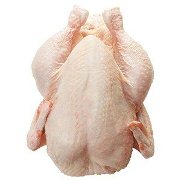 Unless your dog or cat is already refusing to eat, fasting on its own, you may want to gradually ease your pet into the fast. This can be done by decreasing the amount of food given, and substitute lighter ingredients such as organic chicken and rice. Give vegetables that are known to benefit the liver and kidneys because these organs are the main cogs used to clean out your pet’s body of wastes and toxins. Such vegetables include cabbage, cauliflower, broccoli, kale, dandelion greens, parsnips, parsley, turnips and their greens, beets, squash, spinach, celery, and carrots. Some fruits with cleansing properties include cranberry, pomegranate, blueberry, apples, and lemons.
Unless your dog or cat is already refusing to eat, fasting on its own, you may want to gradually ease your pet into the fast. This can be done by decreasing the amount of food given, and substitute lighter ingredients such as organic chicken and rice. Give vegetables that are known to benefit the liver and kidneys because these organs are the main cogs used to clean out your pet’s body of wastes and toxins. Such vegetables include cabbage, cauliflower, broccoli, kale, dandelion greens, parsnips, parsley, turnips and their greens, beets, squash, spinach, celery, and carrots. Some fruits with cleansing properties include cranberry, pomegranate, blueberry, apples, and lemons.
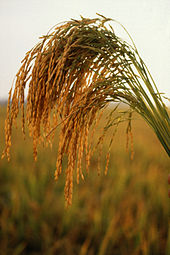 For grains, use rice, barley, or oats and make sure they are well-cooked and well-ground. If you have a food processor, it’s a good idea to run them through the food processor, along with the fruits and vegetables. Make sure all ingredients are as organic and wholesome as possible. The objective is to eliminate toxins.
For grains, use rice, barley, or oats and make sure they are well-cooked and well-ground. If you have a food processor, it’s a good idea to run them through the food processor, along with the fruits and vegetables. Make sure all ingredients are as organic and wholesome as possible. The objective is to eliminate toxins.
The fast, itself, is actually a liquid diet. Make sure plenty of pure water is always readily available, and make sure bowls are kept clean and that they’re made from stainless steel, glass, or high quality ceramic with no harmful paints or shellacs.
Make a broth by putting meaty bones, some organic barley, millet, or rice, and a large amount of pure water in a big, stainless steel pot. Bring to a low boil and then immediately turn the stove down to a low heat and simmer for four to twelve hours. 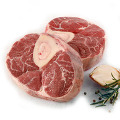 Let the broth cool, and then run a few vegetables and maybe fruits through a juicer. If you don’t have a juicer, use a food processer or blender to try to get as close to a liquid consistency as possible. Picking produce with a variety of colors ensures a good balance of nutrients. Parsley, parsnips, carrots, dandelion greens, and blueberries would be a good mix, for example, and these ingredients have properties that benefit the filtering organs. Don’t use onions. Strain the cooled broth and then add the blended produce mix. A rough guideline would be about a cup of broth to two tablespoons of juice.
Let the broth cool, and then run a few vegetables and maybe fruits through a juicer. If you don’t have a juicer, use a food processer or blender to try to get as close to a liquid consistency as possible. Picking produce with a variety of colors ensures a good balance of nutrients. Parsley, parsnips, carrots, dandelion greens, and blueberries would be a good mix, for example, and these ingredients have properties that benefit the filtering organs. Don’t use onions. Strain the cooled broth and then add the blended produce mix. A rough guideline would be about a cup of broth to two tablespoons of juice.
Some veterinary naturopaths say giving a little organic honey can also help because it gives the animal energy. It can also be used as a vessel to get medicinal herbs or nutrients into your pet. Refrigerated honey can be rolled into small balls with herbs or crushed tablets. If you use this method, use only raw, organic, unpasteurized, unfiltered honey. This is the only food that’s appropriate during a fast because it’s predigested and makes no demands on your pet’s digestive system. Another treatment sometimes recommended is an enema, but talk with your holistic veterinarian before trying that on your own.
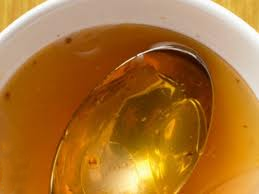 Once the fast is over, you’ll want to gradually introduce solid foods back into your pet’s diet. Give some more of the broth, but also start to give your pet regular foods including organic meats, grains, and vegetables. Make sure the grains are well cooked, and see to it that the cooked grains and the raw vegetables are finely minced, preferably in a food processor. Add some fresh yogurt, preferably goat’s milk yogurt, if possible. At the very least, see to it that the yogurt has the National Yogurt Association’s seal of “live and active cultures” on the label.
Once the fast is over, you’ll want to gradually introduce solid foods back into your pet’s diet. Give some more of the broth, but also start to give your pet regular foods including organic meats, grains, and vegetables. Make sure the grains are well cooked, and see to it that the cooked grains and the raw vegetables are finely minced, preferably in a food processor. Add some fresh yogurt, preferably goat’s milk yogurt, if possible. At the very least, see to it that the yogurt has the National Yogurt Association’s seal of “live and active cultures” on the label.
After this transitioning stage, which can take a few days, your pet will be ready to be back on a regular, natural, raw meat diet with supplements, as described in the Diet section. If your pet seems reluctant to eat, do NOT feed any commercial or highly processed treats to entice the appetite. This would undo the benefits of the fast. If your pet continues to not eat, it’s imperative that you make an appointment with a holistic veterinarian as this can be a sign of a serious internal disease. Also, overweight cats who refuse to eat can get a liver disease called hepatic lipidosis on top of whatever the other issue is. See Liver Disease.